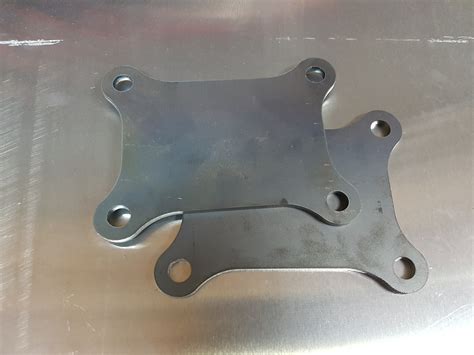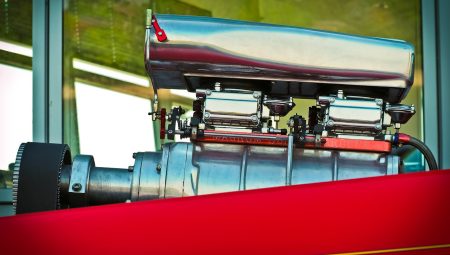Discover everything about engine mounting plates, including types, importance, selection tips, and installation & maintenance for optimal engine performance.An engine mounting plate is a crucial component in both automotive and industrial applications, serving as a robust foundation for securely attaching the engine to the chassis. Understanding the different types and their significance can be pivotal for anyone involved in engine maintenance or installation. With various options available, choosing the right engine mounting plate can enhance performance and longevity while ensuring safety. This blog post will explore the intricacies of engine mounting plates, including their types, importance, and essential tips for selection and maintenance. Whether you’re a seasoned mechanic or a DIY enthusiast, this comprehensive guide aims to equip you with the knowledge needed to make informed decisions and keep your engine running smoothly. Join us as we delve into the world of engine mounting plates!
What is an engine mounting plate?
An engine mounting plate is a critical component in both automotive and marine applications, serving as the sturdy base that supports the weight of the engine and ensures it is securely attached to the vehicle or vessel frame. These plates play a vital role in not only holding the engine in place but also in reducing vibrations and absorbing shocks arising from the engine’s operation, which can prolong the lifespan of both the engine and the surrounding components.
Typically made from robust materials such as steel or aluminum, an engine mounting plate is designed to withstand the considerable forces and stresses produced by the engine during its operation. In many instances, these plates are equipped with rubber isolators or mounts, which act as shock absorbers and further mitigate the impact of vibrations, thereby enhancing both comfort and performance within the vehicle or vessel.
Additionally, the design of an engine mounting plate must align precisely with the specific requirements of the engine type and the overall configuration of the vehicle or boat, meaning that information regarding dimensions, load capacities, and mounting points is crucial for selecting the appropriate plate to ensure optimal functionality and safety.
Types of engine mounting plates
When it comes to engine mounting plates, understanding the various types available in the market is crucial for ensuring proper installation and functionality. Engine mounting plates are designed to support the engine, absorb vibrations, and maintain alignment during operation, all while being tailored to different vehicle models and applications, which is why categorizing them becomes essential.
There are primarily three types of engine mounting plates that one can consider. The first type is the rubber engine mounting plate, which uses rubber to cushion the engine and minimize vibrations, making it ideal for passenger vehicles where comfort is of utmost importance. On the other hand, the second type is the solid engine mounting plate, which is made from materials such as steel or aluminum, providing maximum stability and better performance in high-powered applications, such as racing. Finally, the third type includes hydraulic engine mounting plates that employ fluid-filled chambers to further reduce vibrations and enhance comfort, making them suitable for luxury vehicles and advanced technologies.
In summary, when selecting the appropriate engine mounting plate, one should take into account the specific vehicle requirements, the operational environment, and the desired balance between performance and comfort, as each type offers distinct advantages depending on the application it is intended for.
Importance of engine mounting plates
Engine mounting plates play a crucial role in the overall functioning and longevity of an engine, as they provide the necessary support to securely hold the engine in place while simultaneously isolating vibrations that can lead to wear and tear over time; this makes them an integral component in both automotive and industrial applications, ensuring not only the safety of the engine but also the comfort of the ride and handling of the vehicle.
The design and material of an engine mounting plate significantly influence its performance, as a well-constructed plate helps to absorb shocks and reduce noise levels, ultimately contributing to a smoother driving experience and enhancing the vehicle’s reliability; thus, the importance of selecting the correct type cannot be overstated as it directly correlates with the engine’s operational efficiency and longevity.
Moreover, understanding the importance of engine mounting plates also extends to maintenance practices, as routinely checking these components for signs of wear or damage is essential in preventing more severe issues down the line, which could lead to increased repair costs and potential safety hazards, making it imperative for vehicle owners to
How to choose the right mounting plate
When it comes to selecting the right engine mounting plate, several critical factors must be considered to ensure optimal performance, safety, and compatibility with your specific vehicle or machinery, making the decision process not only important but also intricate.
First and foremost, it is imperative to assess the type of engine you are dealing with, as different engines come with unique specifications and requirements, which means that the mounting plates must be designed to accommodate these variations effectively, thereby preventing undue stress on the engine itself and ensuring durability over time.
Upon evaluating the engine type, you should also take into consideration the material of the mounting plate, as this can significantly affect the longevity and stability of the installation; common materials include aluminum and steel, each with its advantages, such as aluminum’s lightweight nature versus steel’s unparalleled strength, leading to the conclusion that you should choose a material that
Installing and maintaining engine mounting plates
When it comes to the installation of engine mounting plates, the process requires careful consideration and precision, as a well-installed mounting plate is essential for optimal engine performance and vibration control, ensuring that the engine remains securely attached to the vehicle’s chassis while allowing for enough flexibility to absorb vibrations.
To begin the installation, it is vital to gather all the necessary tools and materials, which typically include a torque wrench, a socket set, and appropriate mounting hardware, and once you have confirmed the compatibility of the engine mounting plate with your specific engine model, you can move on to securely placing the mounting plate into position before tightening the fasteners to the manufacturer’s specified torque settings, as incorrect torque levels might lead to premature failure or misalignment issues.
In terms of maintaining engine mounting plates, it is crucial to regularly inspect for signs of wear or damage, such as cracks in the rubber of the mounts or rust on the metal components, as preventative maintenance not only extends the lifespan of the mounting plates but also enhances overall engine effectiveness and minimizes noise and vibration, and if any irregularities are discovered, timely replacement or repairs should be made to avoid
Frequently Asked Questions
What is an engine mounting plate?
An engine mounting plate is a structural component that secures the engine to the vehicle chassis, providing stability and support to the engine during operation.
What materials are commonly used for engine mounting plates?
Engine mounting plates are typically made of durable materials such as steel, aluminum, or high-strength plastics, depending on the application and weight requirements.
What are the main functions of an engine mounting plate?
The main functions of an engine mounting plate include supporting the engine’s weight, absorbing vibrations, and maintaining proper alignment between the engine and transmission.
How can I tell if my engine mounting plate is damaged?
Signs of a damaged engine mounting plate may include excessive engine vibrations, unusual noises from the engine compartment, and misalignment of the engine or transmission.
Can I replace an engine mounting plate myself?
Replacing an engine mounting plate can be a complex task that may require special tools and knowledge; it is advisable to consult a professional mechanic if you are unsure.
How often should engine mounting plates be inspected?
Engine mounting plates should be inspected during regular vehicle maintenance, typically every 30,000 miles or as recommended by the vehicle manufacturer.
What happens if an engine mounting plate fails?
If an engine mounting plate fails, it can lead to engine movement, increased vibrations, misalignment, and potentially severe damage to the engine and transmission.





